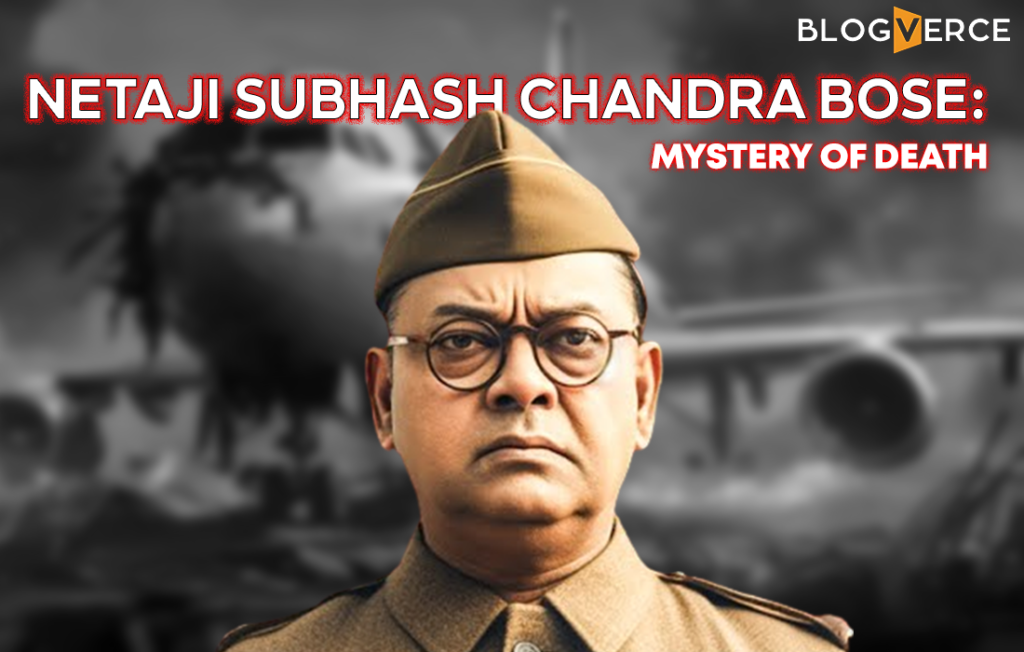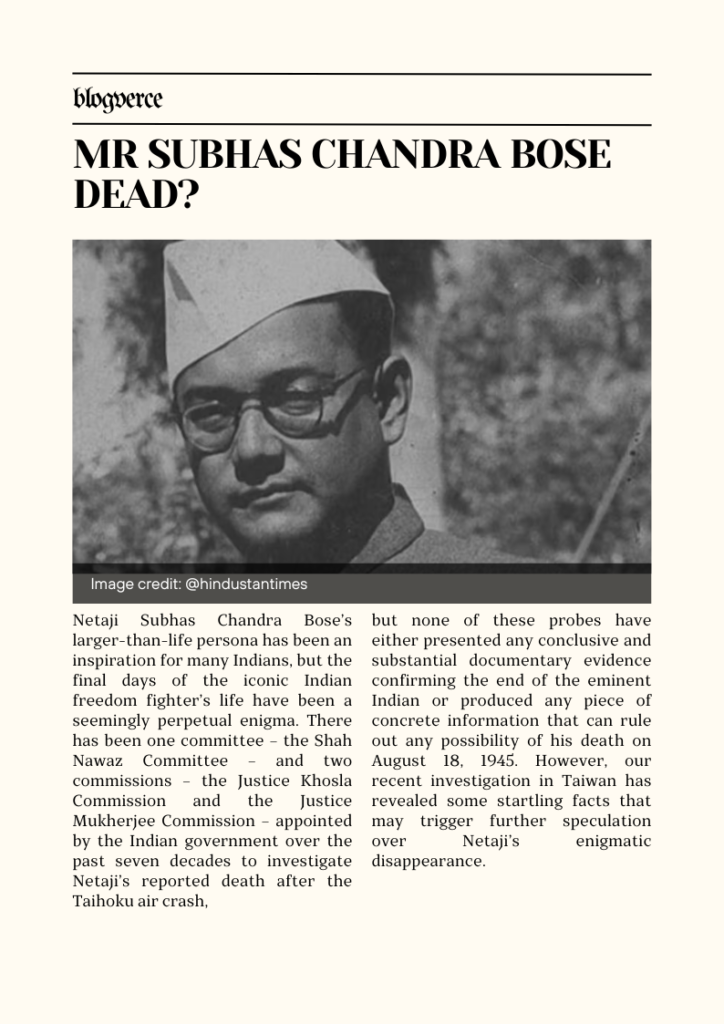
The Final Journey of a Freedom Fighter
this is a story about subhash chandra bose death mystery. On 16th August 1945, the world was on the brink of ending World War II. Japan had surrendered, and Hitler had taken his own life in Germany. Both countries had suffered heavy losses, and Netaji Subhash Chandra Bose, leader of the Indian National Army, was looking for new ways to continue the fight for India’s freedom. His plan was to travel to Tokyo to thank the Japanese government and then proceed to the Soviet Union for further support. However, due to Japan’s recent loss and the nuclear attacks on Hiroshima and Nagasaki, options for travel were limited.
Eventually, a plan was devised for Netaji to travel from Saigon in Vietnam to Tokyo, with stops in Taiwan and Manchuria. On 17th August 1945, Netaji embarked on this journey with his companion Habibur Rahman. Unfortunately, the plane crashed shortly after takeoff, resulting in the death of many passengers, including Netaji. Miraculously, Netaji and Habibur Rahman survived the crash but were severely injured.
Despite the evidence and numerous investigations, there have been various conspiracy theories surrounding Netaji’s death. Some believe that he faked his death and lived in disguise as a hermit in Ayodhya, while others claim he was captured by the Soviets and tortured in concentration camps. However, these theories lack substantial evidence and are widely regarded as untrue.

The Truth Unveiled: Investigations and Reports
Several inquiries and investigations have been conducted over the years to uncover the truth about Netaji’s death. The Figgess Report in 1946 confirmed that a plane crash had occurred and that Netaji had died in a nearby military hospital. The Shah Nawaz Committee in 1956 and the Khosla Commission in 1970 reaffirmed these findings.
In 1999, the Mukherjee Commission was formed to investigate the case further. The commission interviewed witnesses, visited crash sites, and conducted DNA tests. While the DNA test results did not support the theory that Netaji was Gumnami Baba, the commission failed to provide an alternate explanation for the plane crash.
In 2016, the Modi government declassified 304 files related to Netaji, shedding more light on the matter. However, the classified files from Japan remain undisclosed, raising suspicions about the involvement of certain factions within the Japanese government in orchestrating the crash.
Respecting Subhash chandra bose's Legacy
Netaji Subhash Chandra Bose’s family, including his daughter Anita Bose, have accepted the findings of the investigations and reject the conspiracy theories surrounding his death. They consider these rumors to be disrespectful to Netaji’s memory and legacy.
It is essential that we honor Netaji’s values and learn from his story. Instead of spreading baseless conspiracies, we should draw inspiration from his unwavering determination and commitment to India’s freedom struggle. Let us remember the sacrifices he made and the significant contributions he provided.
We must reject these conspiracy theories and focus on preserving Netaji’s legacy by promoting unity, independence, and the pursuit of truth.
Conclusion
The mystery surrounding Netaji Subhash Chandra Bose’s death has captivated the public for decades. However, through numerous investigations and reports, the truth has been revealed. Netaji d!ed in a plane crash on 18th August 1945, and his ashes were later placed at the Renkoji temple in Tokyo.
It is time to put an end to the conspiracy theories and respect Netaji’s memory by focusing on his remarkable achievements and the ideals he stood for. Let us pay tribute to the freedom fighter who dedicated his life to the cause of Indian independence.


